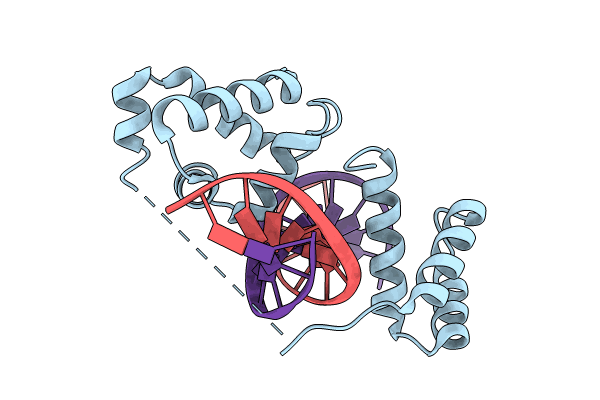
Deposition Date
2023-05-31
Release Date
2024-08-28
Last Version Date
2024-11-27
Entry Detail
PDB ID:
8T0F
Keywords:
Title:
Crystal structure of the PEG10 promoter-bound ONECUT2 DNA-binding domain
Biological Source:
Source Organism:
Homo sapiens (Taxon ID: 9606)
Host Organism:
Method Details:
Experimental Method:
Resolution:
2.61 Å
R-Value Free:
0.28
R-Value Work:
0.22
R-Value Observed:
0.23
Space Group:
C 1 2 1


